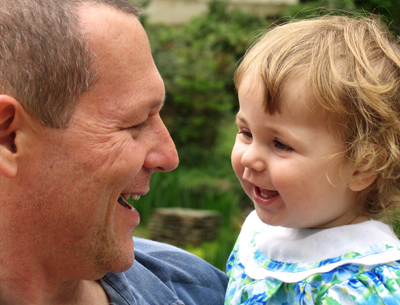Behavioral Cusp: Getting the Biggest Bang for the Buck
We are pleased to have as our guest commentator this week behavioral education expert Ronnie Dietrich, a Senior Fellow of the Wing Institute in Oakland, California. Ronnie has been involved in the science and practice of behavior analysis for more than forty years. He has served as a consultant to education and treatment organizations and facilities across the country. He has been working recently with the Aubrey Daniels Institute to help create greater opportunities for behavior analysts to work in educational settings.
Every parent and educator wants the children in their charge to develop those behaviors and skills that will have the greatest positive impact on their lives by giving them the greatest access to opportunities, environments, and rewards that would not otherwise be available. The converse goal is to help children avoid those behaviors that will have the greatest negative impact on the child’s life (such as substance abuse). In recent years, the concept of behavioral cusps has been used to describe those behaviors that increase access. The question that challenges parents and educators is, what are those behaviors? There are some very good candidates such as reading, language development, social development, and self-control; however, for any individual any behavior or skill can serve that purpose. For example, learning to play a musical instrument or play a sport may increase access to important opportunities not available to other children even though they learn to play an instrument or a sport. The identification of these behaviors, however, is only half the equation. Most children learn to speak and read at some level of proficiency, but for some children reading gives them access to opportunities far beyond those of many of their peers. The obvious question is what makes the difference? There is an impressive body of scientific knowledge that proposes that the differences are not in the critical behaviors or in the personal characteristics of the children, but rather in the social environment in which these children are developing.
 In their seminal work, Meaningful Differences, Hart and Risley (1995) clearly demonstrated that children’s language development was a function of the amount of language to which they were exposed. Children, who from birth to three heard more words, acquired larger vocabularies. The size of their vocabulary at age three predicted how children would perform in the third grade. More importantly measures of parents language style when the children were 1-2 years old were excellent predictors of a child’s language development at age 9. The measure of parent’s language style was a better predictor of child performance than family socio-economic status or parent’s education level. The take-home message from Meaningful Differences is that how parents verbally interact with their children has profound implications for the later development of the child.
In their seminal work, Meaningful Differences, Hart and Risley (1995) clearly demonstrated that children’s language development was a function of the amount of language to which they were exposed. Children, who from birth to three heard more words, acquired larger vocabularies. The size of their vocabulary at age three predicted how children would perform in the third grade. More importantly measures of parents language style when the children were 1-2 years old were excellent predictors of a child’s language development at age 9. The measure of parent’s language style was a better predictor of child performance than family socio-economic status or parent’s education level. The take-home message from Meaningful Differences is that how parents verbally interact with their children has profound implications for the later development of the child.
 Similarly, in The Marshmallow Test: Mastering Self Control (2014), Walter Mischel reviewed fifty years of research on the marshmallow test and self-control. The basic arrangement for the marshmallow test was to tell preschool children (3-4) years old that they could have one marshmallow (or some other preferred treat) or two later when the experimenter returned. The child could ring a bell to signal for the experimenter to return early but then would receive only one marshmallow. The delay ranged from 5 minutes to 15 minutes. What is most interesting about the marshmallow test is that those children who delayed longer and waited for the experimenter to return as adolescents generally performed better on the SAT than those children who did not tolerate long delays to rewards. In their late twenties and early thirties those who waited longer had reached higher educational levels, used risky drugs less, had lower body-mass index, and were better at maintaining close relationships. Developing self-control is a powerful behavioral cusp. The good news is that it is relatively simple skill to teach. Adults can systematically teach it by explicitly requiring the child to wait for a brief period of time and then gradually increase the delay. Also, parents can teach children how to distract themselves during the inevitable delays that occur. One way parents can do this is by modeling tolerating delay and problem solving by talking out loud about how they are managing delay. There are many other strategies that parents and teachers can use to teach tolerance for delay. Mischel provides further details on implementing the procedures in his book.
Similarly, in The Marshmallow Test: Mastering Self Control (2014), Walter Mischel reviewed fifty years of research on the marshmallow test and self-control. The basic arrangement for the marshmallow test was to tell preschool children (3-4) years old that they could have one marshmallow (or some other preferred treat) or two later when the experimenter returned. The child could ring a bell to signal for the experimenter to return early but then would receive only one marshmallow. The delay ranged from 5 minutes to 15 minutes. What is most interesting about the marshmallow test is that those children who delayed longer and waited for the experimenter to return as adolescents generally performed better on the SAT than those children who did not tolerate long delays to rewards. In their late twenties and early thirties those who waited longer had reached higher educational levels, used risky drugs less, had lower body-mass index, and were better at maintaining close relationships. Developing self-control is a powerful behavioral cusp. The good news is that it is relatively simple skill to teach. Adults can systematically teach it by explicitly requiring the child to wait for a brief period of time and then gradually increase the delay. Also, parents can teach children how to distract themselves during the inevitable delays that occur. One way parents can do this is by modeling tolerating delay and problem solving by talking out loud about how they are managing delay. There are many other strategies that parents and teachers can use to teach tolerance for delay. Mischel provides further details on implementing the procedures in his book.
 The remarkable news in these examples is that there are behaviors that can improve the quality of lives for children as they develop into adulthood. We do not have to hope that our children succeed. We can increase their chances by creating protective environments that allow children to succeed.
The remarkable news in these examples is that there are behaviors that can improve the quality of lives for children as they develop into adulthood. We do not have to hope that our children succeed. We can increase their chances by creating protective environments that allow children to succeed.
References
Hart, B., & Risley, T. R. (1995). Meaningful differences in the everyday experience of young American children. Paul H Brookes Publishing.
Mischel, W. (2014). The Marshmallow Test: Mastering Self-control. " Hachette Digital, Inc.".



